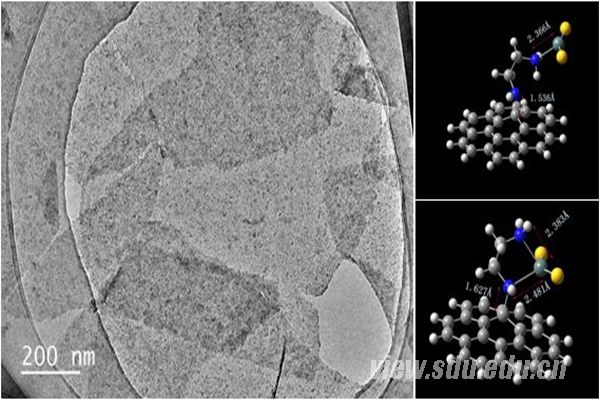Recently, Professor Xiong Shenglin group in team of academician Qian Yitai, School of Chemistry and Chemical Engineering, have made great achievement in their study of anode materials for Na-ion batteries (NIBs). Researchers have synthesized composite materials comprising SnS2ultrafine nanocrystals grown evenly on amino-functionalized graphene hybrid nanosheets (SnS2NC/EDA-RGO) with ethylenediamine serving as reducer and functionalizing reagent via a one-step hydrothermal method at low temperature. When made as Na-ion batteries anode, SnS2NC/EDA-RGO exhibited outstanding cycling stability. The related result, titled as "Enhancing the cycling stability of Na-ion batteries by bonding SnS2ultrafine nanocrystals on amino-functionalized grapheme hybrid nanosheets" was published online in the top journalEnergy & Environmental Sciencein the field of energy and environment (Energy Environ. Sci. 2016,DOI: 10.1039/c5ee03262h;I.F. = 20.523). The first author is Dr. Jiang Yong.
Due to rich reserve and low cost of sodium, NIBs have been considered as an ideal candidate for large scale application as rechargeable batteries. However, the lack of suitable anode materials originating from the big ion radius of Na+hindered the application of NIBs. Layered metal sulfides are featured by their unique layered structure thus attracting the attention of researchers. The big interlayer spacing is easy for Na+transportation and relieves volumetric change during charge-discharge processes. However, in view of metal sulfides as anodes of NIBs, there're still some disadvantages such as low conductivity and volume expansion. Correspondingly, to combine graphene and layered metal sulfides is a common strategy for current research.
Under the guidance of Prof. Xiong, Jiang Yong and many other PhD. students successfully anchored SnS2ultrafine nanocrystals on amine-functionalized reduced graphene nanosheets through one-step hydrothermal treatment. Analyses through FTIR and XPS demonstrate a chemical bonding between functionalized groups and SnS2nanocrystals, which is consistent with the theoretical calculation by Professor Ma Yuchen's group who works with Xiong’s team to conduct the project. Relying on the chemical bonding, the interaction between graphene and Na2S is enhanced, thus mitigating the exfoliation and pulverization of active materials. Compared with SnS2/RGO, SnS2NC/EDA-RGO displays better cycling stability. Moreover, in the composite, voids among SnS2nanocrystals facilitate the infiltration of electrolyte and shorten the transportation distance of Na+. High conductivity and flexibility of functionalized graphene also make sure of sodium storage property of SnS2NC/EDA-RGO. What makes this finding more profound is an easy and general synthetic process which provides a new way to explore the anode materials for NIBs.
Professor Xiong has been working at Shandong University since July 2011, his research interests focus on 1) the construction and electrochemical property of inorganic functional materials, including carbon, metal oxides/sulfides and their composite structure, 2) the exploration of synthetic methodology, 3) the formation mechanism, structure and property of micro/nano structures. As corresponding author with Shandong University as the first unit, he has published 21 SCI papers on many leading periodicals in scientific field, includingEnergy Environ. Sci.(2016,DOI: 10.1039/c5ee03262h),Angew. Chem. Int. Ed.(2015, 54, 10787–10791),Adv. Funct. Mater.( 2016, 26, 1571-1576; 2014, 24, 3012–3020) andNano Energy(2014, 7, 52–62 ; 2013, 2, 1249–1260). His papers have been cited more than 1000 times, with 3 papers being cited over 100 times respectively. And his highest citation of one paper is nearly 200 times, with 6 papers selected as ESI highly cited ones. He was even once invited to write a review in Nanoscale (2015, 7, 17211–17230).
The above research was supported by National 973 project, Natural Science Foundation of China and Shandong Natural Science Foundation for distinguished young scholars.
Related articles:http://pubs.rsc.org/en/content/articlepdf/2016/ee/c5ee03262h?page=search

SnS2 NC/EDA-RGO
Source: www.view.sdu.edu.cn, School of Chemistry and Chemical Engineering
Translated by Xiong Shenglin
Edited by Sun Yuanyuan, Li Wenwen, Zhao Yan